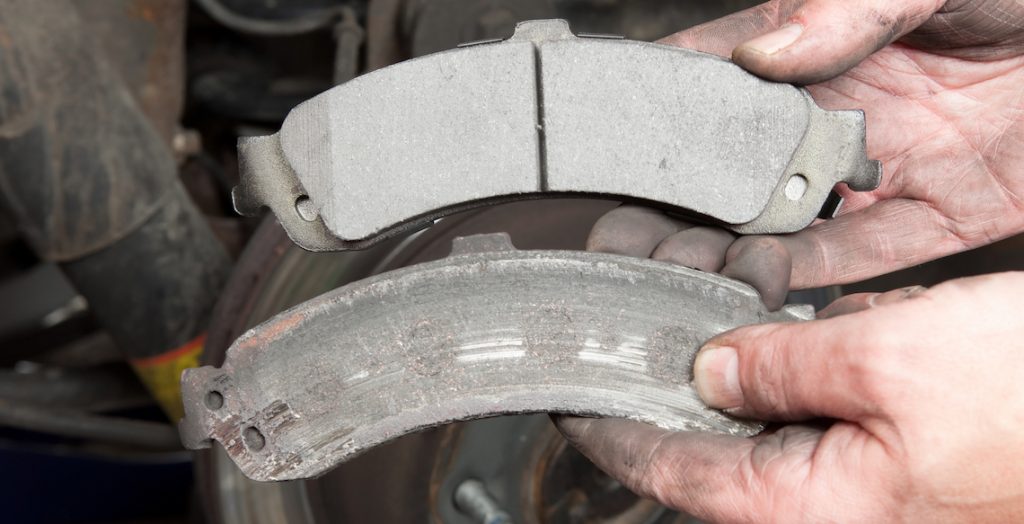Both field and laboratory test results repeatedly prove that the friction lining on a disc brake pad can wear to within a millimeter of the mating surface of the disc brake shoe without affecting brake function, provided the entire surface area of the friction lining material remains intact during contact with the rotor.
In fact, Original Equipment pad wear indicators, designed to warn the motorist that the friction lining needs replacement, typically activate when there is only 1.5mm to 2mm of friction lining remaining.
However, if the friction lining material is not positively and permanently attached to the disc brake shoe, it becomes possible for the friction lining to delaminate, resulting in an immediately degraded performance of the braking system. This instantaneous disruption, even if only temporary, can prove fatal in the event of a panic stop.
This disruption has its root cause in the way brake systems work. The brakes system, a closed hydraulic system addressing all four brakes, stops the car when you push the brake pedal, increasing brake system fluid pressure and pushing the disc brake pads against the brake rotors. The harder you push the brake pedal, the greater the pressure pushing the disc brake pads against the rotor. The pressure required to drive all the disc brake pads against the rotors is provided by a master cylinder (pump) pressurizing the system.

If the friction lining material suddenly breaks away, even partially, the piston pushing on that disc brake pad will instantly have an increased void that it must push past, to reach a level of pressure that stops the car. This sudden void destabilizes the system, increasing the brake pedal travel to make the vehicle come to a stop. In order to build the brake system’s pressure back up, the driver must “pump” the brake pedal, however, depending on circumstances in panic situations, the driver may not have the chance to build up enough pressure to re-activate the brakes.
The delamination of friction lining material can also lead to excessive heat transfer through the compromised disc brake shoe and into the brake caliper, causing the brake system’s hydraulic fluid to boil, compromising the brake system even more. Once the fluid is beyond safe operating temperatures, gasses form in the fluid, preventing the system from generating any pressure. Effectively, the brake system is no longer functional.
Friction lining delamination is a safety concern. The combination of environmental and road conditions, combined with driving habits, can affect the typical bond between the friction lining and the disc brake shoe. As well, friction lining is extremely brittle, which is why it is attached to a steel disc brake shoe for structural and functional support. If the friction lining starts to peel or break away from the disc brake shoe, it will quickly begin to break apart and fall off the disc brake shoe, affecting brake performance, and driver safety.
Not many motorists understand how disc brake pads are constructed. They would not consider a disc brake pad to be an assembly of a steel disc brake shoe and friction lining, if they considered it at all. Similar to how the sole is attached to a person’s shoe, a disc brake pad’s functionality depends on the permanent attachment of these two individual components. Normally, the sole of a person’s shoe wears gradually, providing a constant level of support to the wearer. If any or all of the sole falls away the shoe becomes unstable, and even dangerous, if the wearer is mid-step when the failure occurs, just like brakes.
Courtesy of Global Brake Safety Council
